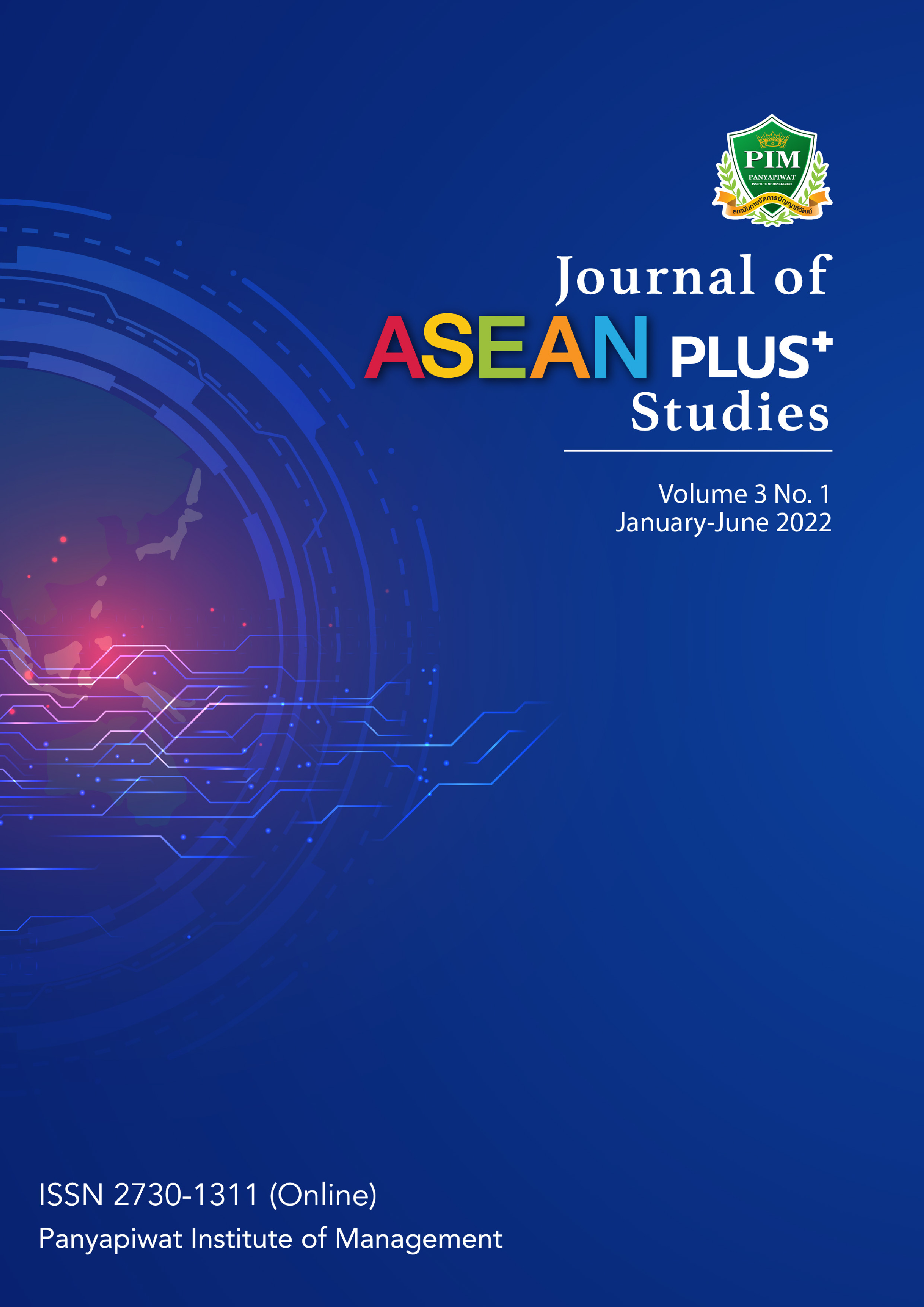The Nexus of Logistics Performance and Trade Flows between China and Thailand
Keywords:
Logistics Performance, Bilateral Trade, Trade Flows, Thailand and ChinaAbstract
This study primarily aims to test how logistics performance could influence the trade flows between Thailand and China from 2007 to 2018. An insight into bilateral trade between the two countries shall be examined, but this study also provided a bird’s-eye view of the trade pattern. Time series multiple regression analysis is employed to estimate the relationship between logistics performance and trades during the timeframe. The findings suggest that logistics performance is statically significant to the trade flows between Thailand and China. In contrast, other variables such as the GDP per capita, FDI outflows, Stocks traded, and Market capitalization of Thai listed companies revealed a positive correlation of trade patterns for both sides. This implied that the trade flows between Thailand and China are fundamentally dominated by logistics performance effectiveness, respectively supplemented by other external forces. Therefore, to maintain trade momentum with China, the Thai government is advised to improve the logistics performance in various conditions such as physical infrastructure, shipment process, and customs procedures to accommodate the increasing demand for the international trade, specifically from the Chinese firms. To this end, the Thai government is advised to allocate a particular budget to improve port facilities, customs clearance, real-time tracking systems, and reliability of the related service delivery. These executions would boost future trade flows and expand the one-belt-one-road economic policy from China to Asia more productively.
References
ASEAN Secretariat. (2018). ASEAN Statistical Yearbook 2018. Jakarta: ASEAN Secretariat.
Banomyong, R. (2008). Formulating Regional Logistics Development Policy: The Case of ASEAN. International Journal of Logistics Research and Applications, 11(5), 359-379.
Chhetri, P., Nkhoma, M., Peszynski, K., Chhetri, A., & Lee, P. T.-W. (2018). Global Logistics City Concept: A Cluster-Led Strategy under the Belt and Road Initiative. Maritime Policy & Management, 44(3), 319-335.
Li, K. X., Mengjie Jin, G. Q., & Ng, A. K. (2018). Logistics as a Driving Force for Development under The Belt And Road Initiative - the Chinese Model for Developing Countries. Transport Reviews, 38(4), 457-478.
Marti, L., Puertas, R., & Garcia, L. (2014). The Importance of the Logistics Performance Index in International Trade. Applied Economics, 46(24), 2982-2992.
Saslavsky, D., & Shepherd, B. (2014). Facilitating Internal Production Networks: The Role of Trade Logistics. The Journal of International Trade & Economic Development, 23(7), 979-999.
Su, S.-l. (2017). National Logistics Performance Benchmarking: A Process-Based Approach Using World Bank Logistics Performance Index. Journal of Supply Chain and Operations Management, 15(1), 55-78.
Thai Ministry of Commerce. (2019). Ministry of Commerce, Thailand. Retrieved January 20, 2022, from https://shorturl.asia/CyUDk
The World Bank. (2022). Logistics Performance Index. Retrieved January 25, 2022, from https://lpi.worldbank.org/about
Tongzon, J. L., & Lee, S. -Y. (2016). Achieving an ASEAN Single Shipping Market: Shipping and Logistics Firms’ Perspective. Maritime Policy & Management, 43(4), 407-419.
Wang, M. L., Qiu, Q., & Choi, C. H. (2019). How will the Belt and Road Initiative Advance
Chinas’Exports? Asia Pacific Business Review, 25(1), 81-99.
Xu, Y., Li, J.-P., Chu, C.-C., & Dinca, G. (2021). Impact of COVID-19 on Transportation and Logistics: A Case of China. Economic Research-Ekonomska Istraživanja, 19(4), 1-19.






